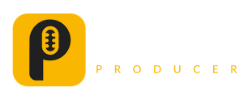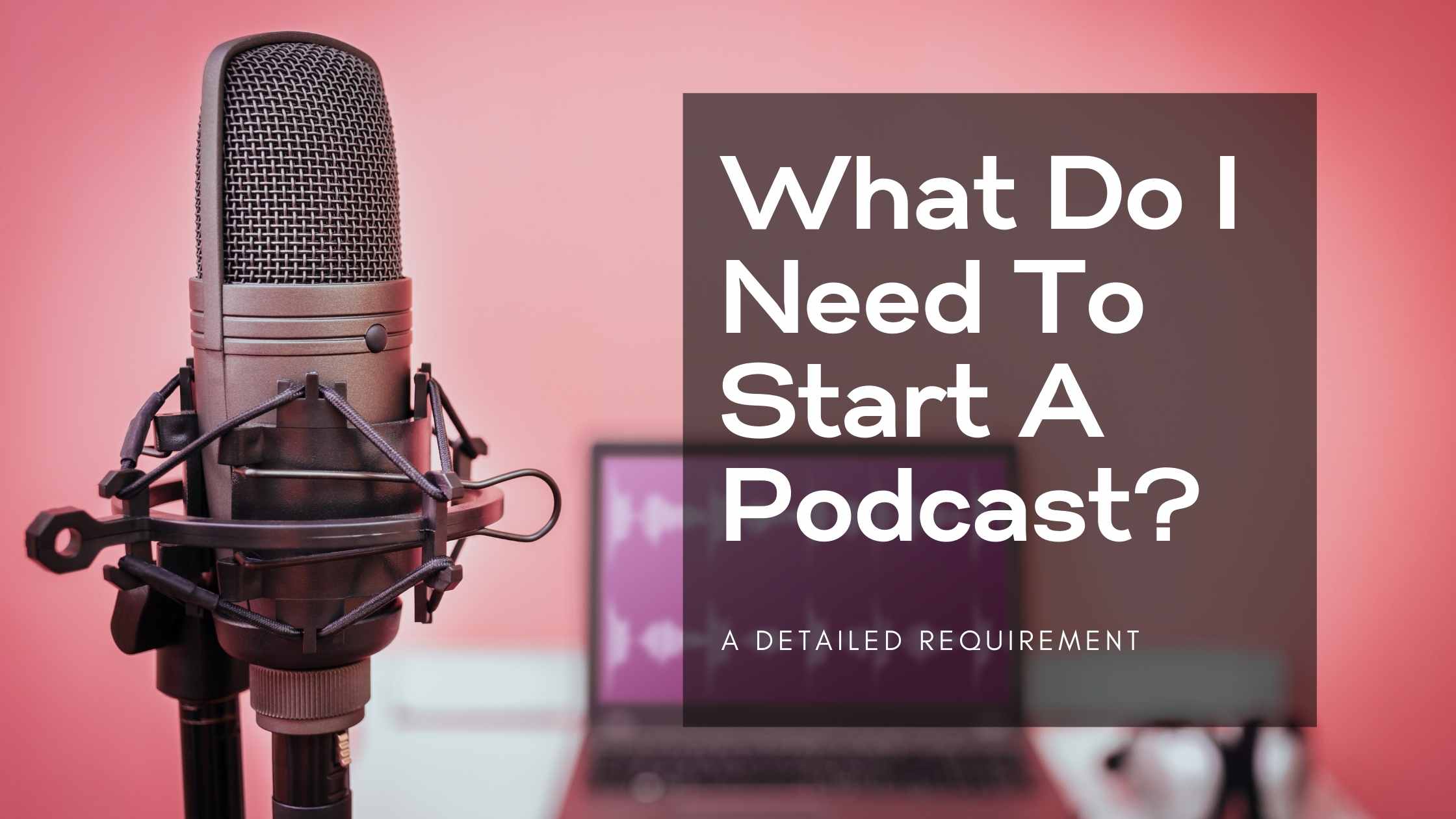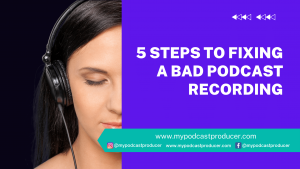Why Podcasting?
Perhaps you are one of those who are looking for opportunities to stand out in their businesses and professions. Do you crave having a voice and a foothold in the niche you operate? Do social media algorithms limit your ability to bond with your audience? Are you looking forward to creating a community of brand faithful? Podcasting might just be for you, if yes.
Just so you know, Podcasting has found its footing in the mainstream and it continues to amass a booming audience base to itself. Isn’t it interesting to know that more than 70% of Americans are familiar with podcasting, and more than 50% of the U.S. population have listened to a podcast in the last 30 days? Are you aware that podcasts reached 68 million people weekly in 2020?
The best time to start a podcast show is now. For one, Podcasting is still a relatively less crowded and competitive space. Did you know that as of 2020, there were only one million active podcasts in the world? Did you know that as of 2018, Apple had only 555,000 podcasts on its platform and that in 2020, that figure rose to a yet meagre 700,000? Google too claims to have indexed only a few million podcasts. Leveraging podcasting to find recognition in the podcast world would be easier.
Podcasting advertising revenue is also growing. In 2020, podcasting advertising revenue reached $659 million. It is estimated that it would have surged past $1 billion by 2022.
These data put in perspective, it would be better if you jumped in on the podcasting train before t it moves. Of course, some things need to be established before jumping in on the podcasters’ league; there are basic steps to be taken before launching into the podcasting world.
The Concept
Your podcast like every other podcast starts as an idea. At the conceptualization stage, you nurture this idea; you preplan your podcast and you set a framework to guide it. Here, you set or determine the goals of the podcast. Ask yourself, “Why am I starting a podcast?” “What is my podcast about?” Perhaps you want to generate leads for your business or you want to be recognized as a leader in your industry. Spelling out your goals helps to develop your podcast show.
After the goals of your podcast have been set, you should pick a topic or theme. Here, it should be decided if the theme would be broad and for the mainstream or focused and narrowed to a niche. You should be passionate about a topic or theme before choosing it. The theme should be something you find interesting to discuss and research. You should also do a bit of market research on other podcast shows to see if you already have competition.
Choosing a name for your podcast should follow. Your Podcast’s name should be catchy, memorable and should rank your podcast’s relevant keywords. Apple’s Podcast best practices suggest that you: “Pay attention to the title, author, and description tags of your podcast. The Metadata for your podcast, along with your podcast artwork, is your product packaging and can affect whether your podcast shows up in relevant searches, and how likely users are to subscribe to it.”
Apple also advises that you “make your title specific. A podcast named Our Community Bulletin is too vague to attract many subscribers, no matter how compelling the content is.” It is also important to use keywords without stuffing. Make your podcast easy to find but do not stuff your title with keywords.
Your podcast’s artwork is so important that it would be advised to suspend creating one at the conceptualization stage. This is because the concept of your podcast could change as you grow.
The Format
There are no rigid set of rules guiding your choice of the podcast format. You should choose a format that suits your podcast’s goals and that you are comfortable with. As there is no particular right or wrong podcast format, you might want to explore the most common formats to determine which suits you.
You could opt for an Interview podcast where you, as the host, interviews individuals within an industry. If you would like your podcast to revolve around specific themes for a good length of time, you could go for the scripted nonfiction genre.
Would you like to keep your audience up to date about happenings in your industry? News Recaps are for you. You could also decide to be an educational podcast that uses scripted nonfiction shows to teach audiences. Your podcast could also combine the features of two or more formats. That is, you could do an interview podcast that aims at educating your audience.
Format aside, your optimal podcast length should be decided. Your podcast should be as long or as short as it needs to be. Also, editing plays a role in length. Insignificant parts, as well as rambling segments of the podcast, can be cut off to trim the podcast.
The question of length being settled, a publishing schedule should be mapped out. This too largely depends on your podcast’s nature and goals. When your podcast is in its infancy, try to develop a connection with your audience by consistently releasing episodes. Consistently publishing helps you stamp yourself in the psyche of listeners. It also helps you keep your podcast from fading.
Recording Equipment and software
Recording equipment and software poses a low barrier to entry into the podcasting world. Podcast audiences are known to place a premium on content at the expense of sound quality. Quality content that captivates listeners should be your unique selling proposition. Quality content backed up by optimal sound quality is the way to go.
Podcast equipment abounds. Notable amongst them are foam balls, Audio-Technica headphones, Focusrite Scarletts, pop filters, rode boom arms, and on-stage shock mounts. Podcast software abounds too and is unbelievably affordable. Software like Audacity which is a free open source audio editor that lets you make changes to the original code easily could be used for optimal editing. Garage Band and Hindenburg are also fine recommendations. Squadcast and Zoom are also recommended for long-distance recordings.
The Podcast Episode
A great podcast starts with a few not so great episodes. Your resolve and passion would be tested in the early stages. At infancy, you must find your footing by continuously churning out new episodes. But what exactly makes up for a great episode?
A Podcast outline is fundamental to podcasting success. While improvisation is allowed, having a podcast outline helps you keep rambling in check. A podcast outline also enhances the episode’s flow.
To a large extent, the success of a podcast hinges on where it is recorded. Podcasters know that the choice of where to record is fundamental to their podcast’s success than their choice of editing software and recording software. It is recommended that you record in a quiet, large room with plenty of space around you and not in a small space with hard flat surfaces that gives room for reverberant sounds.
If getting a large space is not possible for you, try to find a small space with a few reflective surfaces and lots of material that can absorb sound.
Editing and uploading episodes
After episodes have been recorded, editing and uploading come next. At the editing stage, you segment the podcast, you remove audible distractions, you insert prerecorded adverts and voiceovers, and you add intros and outros. You do not have to be overtly technically inclined to do all of these if you have the right software.
It is advisable to edit for content first before editing for distractions. This helps to reduce the editing overwhelm. Do not try to become an editor while trying to achieve optimum sound quality. Hire a podcast editor instead and focus on creating quality content.
Your Intro and theme song help to improve listeners’ experience and engagement. They could also help carve an identity for your podcast. As listeners get familiar with your intro and theme song, you are steadily finding a place for yourself in their heads and hearts.
The Podcast Artwork
Your listeners’ eyes see before their ears ear. Your artwork is the first point of contact between you and your audience. Potential listeners should be able to figure out what your show is about by glancing at your artwork. Your podcast artwork should visibly communicate the subject of the podcast.
You should not use too many words in your artwork. Your artwork is part of your overall branding. It should be of high quality and it should be consistent with the imagery you use across your entire brand.
Of honourable mention is the podcast episode description. This description is considered Metadata. Metadata is information about your MP3 file: the name of your show, its description episode number, the release year, and so on. Filing these metadata helps make tour podcast visible on Apple, Google Play, and Spotify.
Of equal importance with the episode description is picking a category for your podcast. Picking a podcast category boosts your podcast’s visibility and ranking.
Getting Listed
Getting listed in the top podcast directories is an important part of your podcast marketing strategy because the majority of new listeners would find your podcast through these directories. Submit your podcast to top directories like Apple, Google, Spotify, and other directories. Each directory has technicalities that can be learned. Paying attention to them (Google, Apple, and Spotify especially) puts you in front of 95% of all podcast listeners.
Running a podcast is not an overwhelming or tiring art. As long as due credence is paid to producing quality content. Good technicalities are rewarding but you should let professionals worry about that for you. Push forward great content and let the technicalities subtly back your content.



